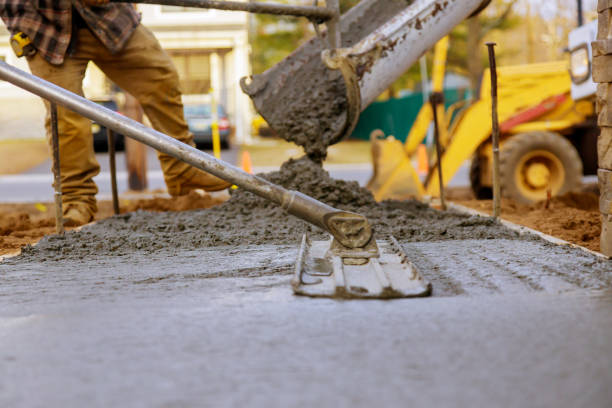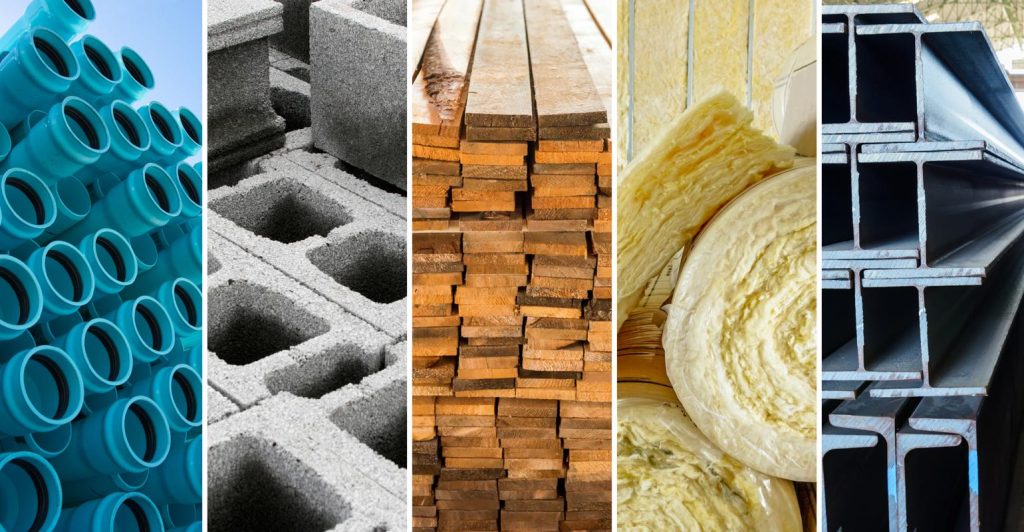Month: June 2024
Rapid Return on Investment – The Financial Benefits of Residential Paving Services
Investing in residential paving services offers homeowners not only enhanced curb appeal but also significant financial returns. Whether you are considering driveway paving, pathway installation, or patio construction, these improvements can provide both immediate and long-term advantages that outweigh initial costs.
Enhanced Property Value
One of the most compelling reasons to invest in residential paving is the boost it gives to property value. A well-maintained and aesthetically pleasing driveway or patio enhances the overall look of a home, making it more attractive to potential buyers. According to real estate experts, curb appeal plays a crucial role in the marketability of a property. A professionally paved driveway or a beautifully designed pathway can make a strong first impression, potentially increasing the resale value of your home.
Durability and Low Maintenance
Another financial benefit of residential paving is its durability and low maintenance requirements. High-quality materials used in paving, such as asphalt or concrete, are designed to withstand heavy traffic and various weather conditions. This durability translates into fewer repairs and maintenance costs over time, saving homeowners money in the long run. Unlike unpaved surfaces, which can deteriorate quickly and require frequent upkeep, paved areas generally require minimal maintenance beyond occasional sealing or cleaning and get more information.

Improved Safety and Accessibility
Safety and accessibility are critical considerations for homeowners, especially those with young children, elderly family members, or individuals with mobility issues. Properly paved driveways and pathways provide a smooth, even surface that reduces the risk of trips and falls. This enhanced safety not only protects residents and visitors but also minimizes the potential for costly liability claims due to accidents on your property. Additionally, well-designed paving can improve accessibility, making it easier for everyone to navigate around the home.
Environmental Considerations
While the financial benefits of residential paving are substantial, it is also essential to consider the environmental impact. Opting for permeable paving materials, such as permeable concrete or porous asphalt, can help manage storm water runoff by allowing water to seep through the surface and into the ground. This reduces the strain on municipal drainage systems and promotes groundwater recharge, contributing to environmental sustainability while potentially qualifying homeowners for local government incentives or rebates.
Return on Investment ROI
In terms of financial return, residential paving services offer a notable ROI. Beyond increasing property value, paving projects can often pay for themselves through improved energy efficiency and reduced maintenance costs. For example, a well-designed driveway can enhance drainage, reducing the risk of water damage to the foundation of your home and minimizing the need for costly repairs in the future.
Investing in residential paving services is not just about improving the aesthetic appeal of your property it is a sound financial decision that can yield substantial returns. From increasing property value and enhancing safety to reducing maintenance costs and supporting environmental sustainability, the benefits of residential paving are clear. Whether you are planning to sell your home in the near future or simply looking to improve its functionality and appeal, consider the long-term financial advantages that quality paving services can provide. By choosing reputable contractors and high-quality materials, homeowners can enjoy both immediate and lasting benefits from their investment in residential paving.
Continue Reading...Sustainable Building Solutions: Harnessing Durability for Environmental Resilience
Durability is a key factor for sustainable construction. It helps in ensuring that buildings keep their original purpose in mind throughout their lifespan. Insufficient durability can result in massive repair and reconstruction expenses in addition to the environmental consequences.
The durability of a product can reduce the need for maintenance by decreasing unplanned maintenance time. This is crucial for heavy equipment like cranes.
Important
One of the key components of building efficiency is how construction materials and structures resist degeneration. Durability can be a result of many factors including raw material selection, quality control, designs and maintenance methods.
For example, concrete and steel are highly durable construction materials that are able to withstand the natural aging of their components over the course of. They can also be used to make new ones over the duration of the building. This is an essential aspect of sustainability.
A lot of times, the durability comes along with a low-maintenance. As an example, a concrete structure needs minimal maintenance during its life span compared to wood structures, which might need regular painting. A structure’s longevity is crucial because it helps reduce annualized embodied environmental impact.

Factors Influencing Material Longevity
Many factors affect the durability of construction materials. Without detailed specs the construction industry is unable to calculate the duration of a construction. The truth is that buildings that are durable can endure for 30 years or longer before any major maintenance work is required.
The construction practices as well as the quality of the materials utilized in construction will determine the strength of the structure. Concrete is a good instance of a material which is incredibly durable when properly formulated, placed and cured. Protections like impressed current cathodic shielding may also prolong the lifespan of steel and reinforced concrete parts.
It is a common occurrence for durability to be paired with low-maintenance. In the case of exterior siding, for instance, it that has to be painted frequently may not be as strong as the pultruded window frames and sash, which require minimal maintenance to perform their intended role over a longer length of time.
How can you increase the longevity of the materials
Whether constructing a high-rise skyscraper or creating a piece of furniture, durable construction materials will last for years of use. In order to ensure that the material is durable, it is a matter of careful planning and precise execution. Here are some suggestions to maximize the durability of products
Incorporating durability into the design of products da 1×2 from the start. The modular design offers component exchangeability and repairability. This prolongs the life of products as well as reduces the consumption.
Conducting lab tests that mimic real-use aging to identify durability difficulties and determine strategies. For educating consumers on product longevity so that they can adopt more sustainable shopping behavior.
Minimizing return rates, lowering maintenance expenses and limiting downtime in order to reduce operational expenses. investing in projects that are durable allows companies to reduce waste, optimize inventory and focus resources on primary operations. Durable projects reduce recurring costs and boost returns on investment. This helps businesses achieve objectives in terms of finances and ensure the long-term viability.
Environmental Impact of Construction Materials
The construction industry uses a lot of resources and generates a large amount of garbage. Chemicals used at the construction site, diesel used in trucks, diggers and building materials also have impacts on the environment.
Through spreading the impact of initial construction of a structure over a long period of time, strong buildings aid in reducing the environmental impact. These buildings also need lesser maintenance and reduce the requirement for new resources and power.
Building materials that have low environmental impact can be found in nature that are found in the vicinity or near by, such as timber clay, straw cob and rammed Earth. They’re generally less expensive to build with and do not require factories to manufacture them and long transportation distances for delivery to your site. Additionally, they can be recycled to reduce their effect on the environment.
Construction Materials Maintenance: Best Techniques
In order to ensure that the construction equipment is safe and operates efficiently the equipment requires periodic maintenance. Lubrication is essential to lessen wear and friction, as well as setting load capacity indicators in order to avoid overloading that can cause accidents or costly damage.
Maintaining a good maintenance routine has a huge impact on equipment lifespan, as well as the worth of resales. Equipment that is not maintained can be more effective and lasts longer, which decreases the time to complete projects and increases costs.
Most often, the reason for major equipment breakdowns is mechanical failure. It is possible to avoid this through regular preventive check-ups on maintenance. The most expensive cost is in operating expenses direct through mechanic charges as well as equipment breakdowns, but the indirect cost is reduced productivity.
Continue Reading...The Future of Fan Engagement – Interactivity in Sports Broadcasting
In the ever-evolving landscape of sports broadcasting, the future holds a promise of unprecedented fan engagement through enhanced interactivity. Gone are the days of passive viewership; instead, fans are increasingly becoming active participants in the unfolding drama of sporting events. Through a convergence of technology, social media, and innovative broadcasting techniques, the spectator experience is being transformed into an immersive journey where fans feel connected, involved, and valued. One of the key drivers of this transformation is the proliferation of second-screen experiences. With the majority of viewers now owning smartphones or tablets, sports broadcasters are capitalizing on this trend by offering complementary content that enriches the main event. Whether it is live stats, player insights, or interactive polls, second-screen experiences provide fans with a deeper understanding of the game while keeping them engaged during breaks in play. This dual-screen approach not only enhances the viewing experience but also opens up new avenues for advertisers to reach their target audience in a more personalized manner.

Furthermore, advances in augmented reality AR and virtual reality VR technologies are pushing the boundaries of fan engagement even further. Imagine being able to step into the shoes of your favorite athlete, experiencing the thrill of scoring a winning goal or hitting a game-winning shot, all from the comfort of your living room. With AR overlays, fans can access real-time statistics, replays, and analysis overlaid onto the live broadcast, providing a deeper level of immersion and understanding. Similarly, VR technology allows fans to be transported to the heart of the action, whether it is sitting courtside at a basketball game or standing pitchside at a soccer match, creating unforgettable memories that blur the lines between reality and virtuality. Moreover, social media platforms are playing an increasingly central role in shaping the sports 해외스포츠중계사이트 viewing experience. From live tweeting to interactive polls, platforms like Twitter and Instagram are turning sports broadcasts into communal events where fans can share their thoughts, reactions, and predictions in real-time.
Broadcasters are leveraging this trend by integrating social media feeds directly into their broadcasts, allowing fans to see what others are saying and participate in the conversation themselves. This real-time interaction not only fosters a sense of community among fans but also provides valuable feedback to broadcasters, helping them tailor their content to better meet the needs and preferences of their audience. Another emerging trend in sports broadcasting is gamification, where viewers are incentivized to engage with the content through challenges, quizzes, and predictions. By incorporating elements of competition and reward, broadcasters are able to transform passive viewers into active participants, driving up engagement and viewer retention. Whether it is predicting the outcome of the next play or competing against friends in a fantasy sports league, gamification adds an extra layer of excitement and intrigue to the viewing experience, keeping fans coming back for more. In conclusion, the future of fan engagement in sports broadcasting is bright and full of possibilities. Through the integration of second-screen experiences, AR/VR technologies, social media integration, and gamification, broadcasters.
Continue Reading...